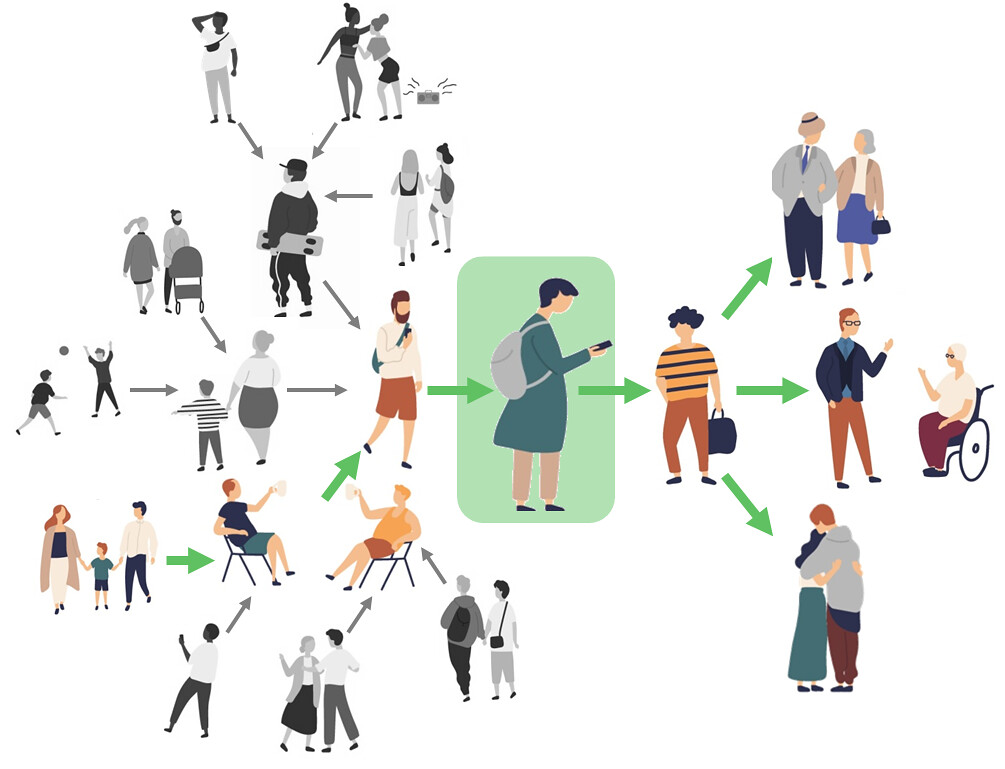Background
Dr Ben Ainsworth is a Senior Lecturer in the Department of Psychology. His research focuses on helping people with chronic health conditions using non-pharmacological treatments. He is in the leadership team for the Person Based Approach, which is a method for involving patients and stakeholders at every stage of a research project: inception and design as well as throughout the project itself.
Engagement Type - Listening, Working Together
Public group - clinicians and public representatives
Engagement Method - Website development
Themes - Patient & Public Involvement, Person Based Approach
Project Team
Dr Ben Ainsworth
Facts and Figures
The Germ Defence website was accessed by over 600,000 people and was translated into over 20 languages.
Overview
During the COVID-19 pandemic I had an idea for a project to improve infection control by developing a website detailing evidence-based behaviours that people could adopt in the home (such as hand-washing). Given the context – an ongoing public health crisis – I needed to develop a rigorous yet rapid approach for development, that took into account the continuously changing context.
As soon as I had the initial idea, I got together a group of public representatives, as well as clinician stakeholders, and we worked as a team to develop the project and put in a funding proposal to UKRI, which was successful.
This project panel met together weekly for three months during the most intense phase of development, and then as needed after that (for example, if there was a change in government guidance).
Engagement Method

Three iterations of the website were optimised and launched within short time-scales of 1 – 2 months. Each version was informed by regular stakeholder engagement, emerging scientific evidence, changing government guidance, rapid qualitative research (telephone interviews, and online surveys), and analyses of usage data.
In order to quickly evaluate this large volume of data and feedback we used the Table of Changes method from the Person Based Approach, to prioritise potential optimisations based on their likely effect on behaviour change.
The public contributors identified important clarifications to the website content, such as whether Covid-19 can be transmitted via air as well as surfaces, and ensured that information about difficult behaviors (such as self-isolation) was supportive and feasible.
Motivations for Engagement
I have a long history of using the Person Based Approach in my research. This is a way of placing the target-user at the centre of the project, and making sure that what we’re developing is acceptable for them.
When you’re working in behavioural science, or you’re trying to change people’s behaviour in some way, if you don’t integrate them from the start then it just doesn’t work. You might have some great outputs, or some great papers, but you wouldn’t have any real-world impact.
For this project we prioritised our public participants in the scheduling of our weekly meetings to make sure they could attend. They were key to the project, we paid them for their time according to INVOLVE guidelines, and they were co-authors on papers we published.
Evaluation
The website we created, Germ Defence, was used by 600,000 people across the UK. It also attracted a large amount of press coverage and was referenced on the Public Health England website.
Based on some modelling we did on the swine flu outbreak, over half (53%) of the people who visited our website washed their hands at least 10 times a day, and they caught fewer colds, flus, and stomach upsets as a result.
Top Tips
I think it’s important to try and involve your participants throughout your project, not just in the project design phase. The more you integrate them, the more you get established collaborations, and the easier it is to work with them in the future. The Person Based Approach website has lots of useful information about how you can involve people in your research.
